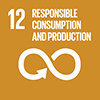Description/achievement of initiative
Traditionally, brands produce specs for their labels based on their requirements but, more often than not, they aren’t aware of the implications their choices can make on material consumption, cost and the environment. Fortunately, ITL has combined developed a solution to remedy this: intelligen™. Offered as a free service, the award-winning product re-engineering solution helps customers to minimise raw material waste, and then showing the net effect of this change on cost and environmental impact.
Implementation methodologies
intelligen™ follows a simple 3-step process.
At stage 1, we get to know their customer’s product and business better to see where problems might be occurring and what opportunities exist. After selecting the products to improve, our product engineers study the existing design and determine what production platform improvements can be made along with the impact it has on cost and the environment. They identify whether the design of the chosen product can be improved or produced more efficiently, according to the specific machines it is going to be made on. This information is used as a baseline. For example, our engineers consider the type of press or loom the product is currently being made on and/or if the product’s dimensions can be optimised to fit more on a sheet/loom width.
For woven labels specifically, they may even suggest that the customer use their bespoke virtual proofing LabelView™️. Using this software creates realistic and incredibly detailed digital images of woven labels to help brand direction, colour choices and various other aspects of label design before committing to physical sampling for final approval. It drastically speeds up the sampling time (reducing it from weeks to days) while decreasing the use of energy and materials during the sampling process.
At the re-size stage, we slightly alter the original product’s dimensions to offer a “Better” alternative and presents the results by highlighting improvements made. We also provide samples, cost comparisons, raw material saving statistics and the impact on the use of natural resources.
At the final stage, we look at how customers can re-invest in ‘green’. The benefit of intelligen™ is that it’s more than just a re-sizing tool. Although the cost and environmental savings after this step are already impressive, our engineers look at raw material types and quality to create the “Best” option: the most sustainable alternative. For paper labels, they offer customers the opportunity to re-invest their cost-savings achieved in the previous step into even more sustainable materials which may have been considered a luxury otherwise. With woven labels, they further engineer the label by reducing the weft density or picks per centimetre (PCM) which allows for a high-quality label and, more importantly, brings even greater cost savings due to faster weaving and even less waste due to less yarn needed in production.
Arrangements for Capacity-Building and Technology Transfer
NA
Coordination mechanisms/governance structure
ITL uses the Higg Materials Sustainability Index (MSI) to calculate the statistics shared during an intelligen™ exercise. Using life-cycle assessment data (LCA), the Higg MSI assesses five environmental impacts of different materials and manufacturing processes:\r\n1. Global Warming \r\n2. Potential Nutrient Pollution in Water (Eutrophication) \r\n3. Water Scarcity \r\n4. Fossil Fuel Depletion\r\n5. Chemistry
Partner(s)
ITL - Intelligent Label Solutions


 Ongoing
Ongoing
 Ongoing
Ongoing
 Time-frame: 01/18 - Ongoing
Time-frame: 01/18 - Ongoing